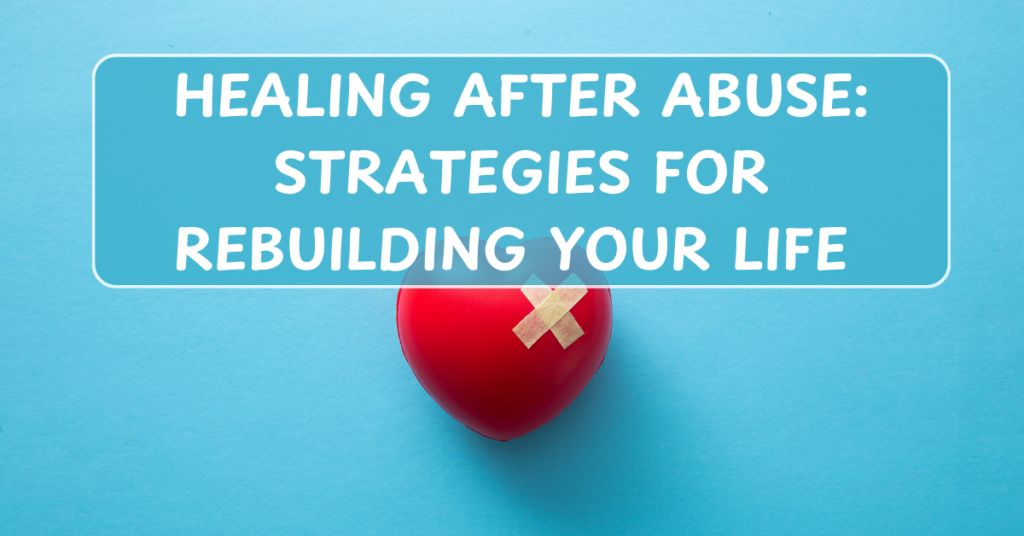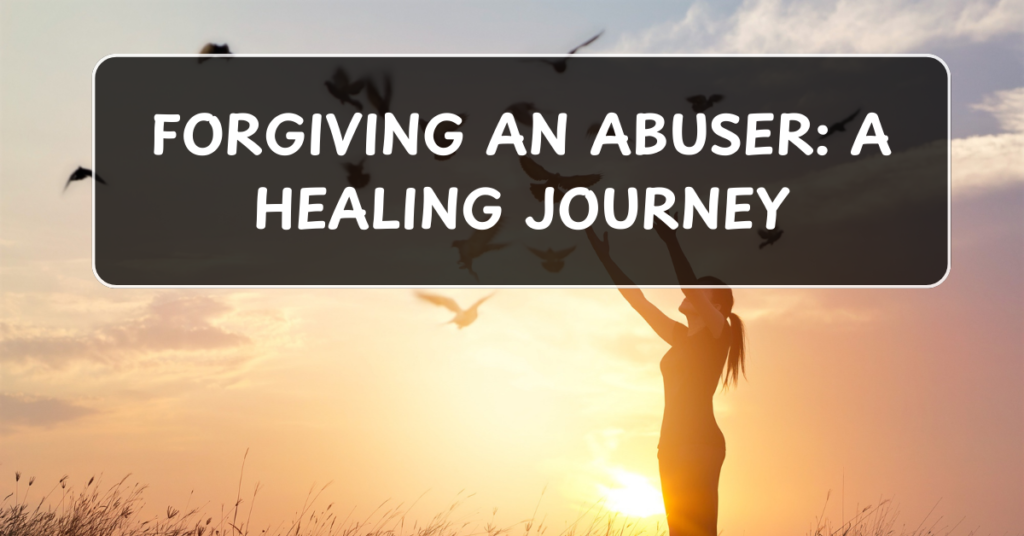
Experiencing abuse can leave deep emotional, physical, and psychological scars. Whether it’s emotional, physical, sexual, or any other form of abuse, healing is a long and often difficult journey. But it is also a journey of reclaiming your life, regaining your sense of self-worth, and finding empowerment. In this post, we’ll explore effective strategies for healing after abuse and provide guidance on how to rebuild your life with strength and resilience.
1. Acknowledge the Pain and Understand the Impact
The first step in healing after abuse is acknowledging the pain you’ve experienced and understanding the deep impact it has had on your life. This involves recognizing that abuse is not your fault and that it affects every aspect of your well-being.
- Understand the trauma: Abuse can cause emotional trauma, leading to symptoms like anxiety, depression, PTSD, and a sense of worthlessness. Recognizing these symptoms is an essential part of the healing process.
- Embrace your feelings: Don’t suppress your emotions. Allow yourself to feel sadness, anger, fear, or grief. These emotions are part of the healing process and should not be ignored or dismissed.
2. Seek Support from Trusted Individuals
Healing doesn’t have to happen in isolation. The support of friends, family members, or professional counselors can make a world of difference.
- Reach out to trusted friends and family: Confiding in loved ones who are understanding and supportive can help you feel less alone. Surround yourself with people who will listen without judgment.
- Find professional support: A licensed therapist, counselor, or support group can help you process your emotions and guide you through the healing process. Therapy, especially trauma-focused therapy, can be a powerful tool for understanding the impact of abuse and learning coping mechanisms.
- Join a support group: Connecting with others who have gone through similar experiences can provide a sense of community and healing. Knowing you’re not alone in your journey can be empowering.
3. Focus on Self-Care and Healing the Mind and Body
After enduring abuse, it’s important to take care of your physical and emotional health. Prioritizing self-care can help restore your sense of balance and well-being.
- Practice mindfulness and relaxation: Techniques like deep breathing, meditation, and yoga can help reduce stress and anxiety. Mindfulness can also help you become more aware of your thoughts and feelings, allowing you to better manage them.
- Physical self-care: Engaging in regular exercise, eating nourishing food, and getting adequate sleep are all vital for physical healing. Exercise, in particular, can help boost your mood by releasing endorphins and promoting a sense of well-being.
- Journaling: Writing down your thoughts and feelings can be an outlet for your emotions and provide clarity as you process your experience. Journaling can also help you track your healing progress over time.
4. Set Boundaries and Reclaim Control
One of the most powerful steps in healing from abuse is learning how to set healthy boundaries. Abuse often leaves you feeling powerless, but reclaiming control over your life starts with establishing boundaries with others.
- Learn to say “no”: Setting boundaries is about protecting your emotional and physical space. It’s okay to say no to people or situations that feel unsafe or unhealthy. Practice asserting yourself in situations that previously felt intimidating.
- Distance yourself from toxic relationships: If possible, distance yourself from those who perpetuate unhealthy dynamics. This may mean cutting off contact with an abuser or distancing yourself from others who enable toxic behavior.
5. Address the Trauma and Process the Pain
Healing after abuse involves confronting the trauma and processing the pain. While this can be difficult, facing the trauma head-on is essential for long-term healing.
- Work with a trauma-informed therapist: Trauma therapy is specifically designed to help individuals process past traumatic events in a safe and healthy way. This may involve cognitive-behavioral therapy (CBT), EMDR (Eye Movement Desensitization and Reprocessing), or other therapeutic approaches.
- Understand the cycle of abuse: Gaining an understanding of the patterns of abuse can help you avoid falling into similar situations in the future. It also helps to break the cycle of self-blame and guilt that often follows abuse.
6. Rebuild Your Sense of Identity
Abuse can cause a person to lose sight of who they are, as they become consumed by the trauma. Rebuilding your sense of self is crucial for regaining confidence and a sense of purpose.
- Rediscover your passions: Reconnect with activities and hobbies that bring you joy and fulfillment. Whether it’s art, writing, gardening, or traveling, doing things you love helps rebuild your sense of self-worth.
- Set new goals: Set small, achievable goals that can help you rebuild your confidence. Overcoming these challenges will empower you and show you that you are capable of moving forward.
- Practice self-compassion: Be kind to yourself. Healing takes time, and it’s okay to have setbacks. Allow yourself to heal at your own pace, without comparing your journey to others.
7. Empower Yourself with Knowledge and Resources
The more knowledge and resources you have, the better equipped you will be to heal and protect yourself in the future.
- Educate yourself about abuse: Understanding the dynamics of abuse, the signs of manipulation, and how to stay safe will empower you to recognize unhealthy behaviors in the future.
- Access resources for empowerment: There are numerous organizations, hotlines, and community resources that provide guidance, support, and legal help for abuse survivors. Make use of these resources as you heal.
8. Reclaim Your Voice and Advocate for Others
As you heal and gain strength, consider how you might use your experiences to help others. Sharing your story or becoming involved in advocacy can empower you and contribute to the collective healing of others.
- Share your story (when ready): Telling your story can help you reclaim your voice and serve as a source of inspiration for others. Be mindful of your healing process and share your story when you feel ready, whether publicly or privately.
- Get involved in advocacy: Many survivors find purpose in advocating for the prevention of abuse. Whether through volunteering, supporting survivor organizations, or raising awareness, advocacy can help you transform your pain into empowerment.
Conclusion
Healing after abuse is a deeply personal journey, but it is also a journey of empowerment. By acknowledging the trauma, seeking support, focusing on self-care, and rebuilding your sense of self, you can regain your strength and create a life of fulfillment and joy. Healing is not linear, and it may take time, but know that you are capable of rebuilding your life and finding empowerment. Surround yourself with love, support, and resources, and remember that you are worthy of peace, happiness, and respect.

